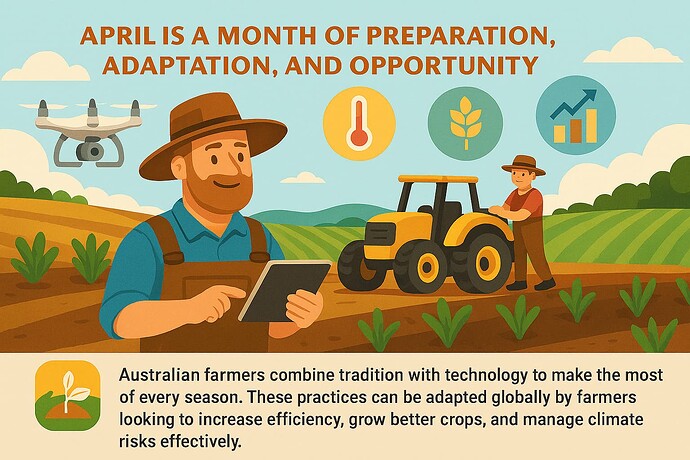April is autumn in Australia, a time of transition. Farmers are finishing the harvest of summer crops and beginning to plant their winter crops. It is a critical planning month that sets the direction for the rest of the year’s yield and income.
Key Crops Planted in April
1. Wheat
- Sown across regions like Western Australia, South Australia, and New South Wales
- Grows well in April’s cooler, drier conditions
- A major export product sold to countries including Indonesia and India
2. Barley
- Commonly planted with wheat
- Used for animal feed and brewing
- Exports support markets in China and Japan
3. Canola (Rapeseed)
- Planted for cooking oil and biofuel
- Requires cooler temperatures; popular in Victoria and South Australia
- Majority is exported
4. Chickpeas and Lentils
- Sown in Queensland and Northern NSW
- Highly demanded in India and the Middle East
- Improves soil fertility through nitrogen fixation
Major Crops Harvested in April
1. Cotton
- Harvest peaks in Queensland and New South Wales
- One of the most profitable export crops
- Used globally in the textile industry
2. Grapes (Wine and Table)
- Red wine varieties like Shiraz and Cabernet are harvested in April
- Regions include South Australia and Victoria
- Supports Australia’s wine export industry
3. Apples and Pears
- Harvested in Tasmania and southern Victoria
- Supplied to both local and international markets
Vegetable Farming in April
Cool-season vegetables like carrots, onions, spinach, broccoli, and lettuce are sown in southern Australia. These crops are grown using both traditional and greenhouse techniques to ensure year-round supply.
Water and Climate Management
April marks the beginning of the “autumn break”, when the first seasonal rains arrive. Farmers monitor weather forecasts closely and plan sowing accordingly. In irrigated zones, water is managed through smart irrigation systems and regional allocation policies.
Average Farmer Revenue in April
| Crop | Revenue (AUD/tonne or hectare) | Notes |
|---|---|---|
| Wheat | $500–750 | Major export crop |
| Barley | $400–650 | Dual-use crop (feed + malt) |
| Canola | $700–850 | High global demand for oil |
| Chickpeas | $800–1000 | High-value pulse for export |
| Cotton | $2000–2500 per hectare | High-value irrigated crop |
| Grapes | $600–1200 per tonne | Supports wine and fresh produce |
Lessons Other Countries Can Learn from Australian Farming
- Seasonal Strategy – Align sowing and harvesting with climate patterns, not calendar months
- Crop Rotation – Use legumes and pulses to maintain soil health
- Export-Oriented Cropping – Focus on crops with strong international markets
- Smart Irrigation – Maximize water efficiency with drip systems and weather-based planning
- Dual-Season Planning – Harvest one crop and plant another to boost annual income
- Climate Resilience – Use drought-tolerant and short-duration crop varieties
